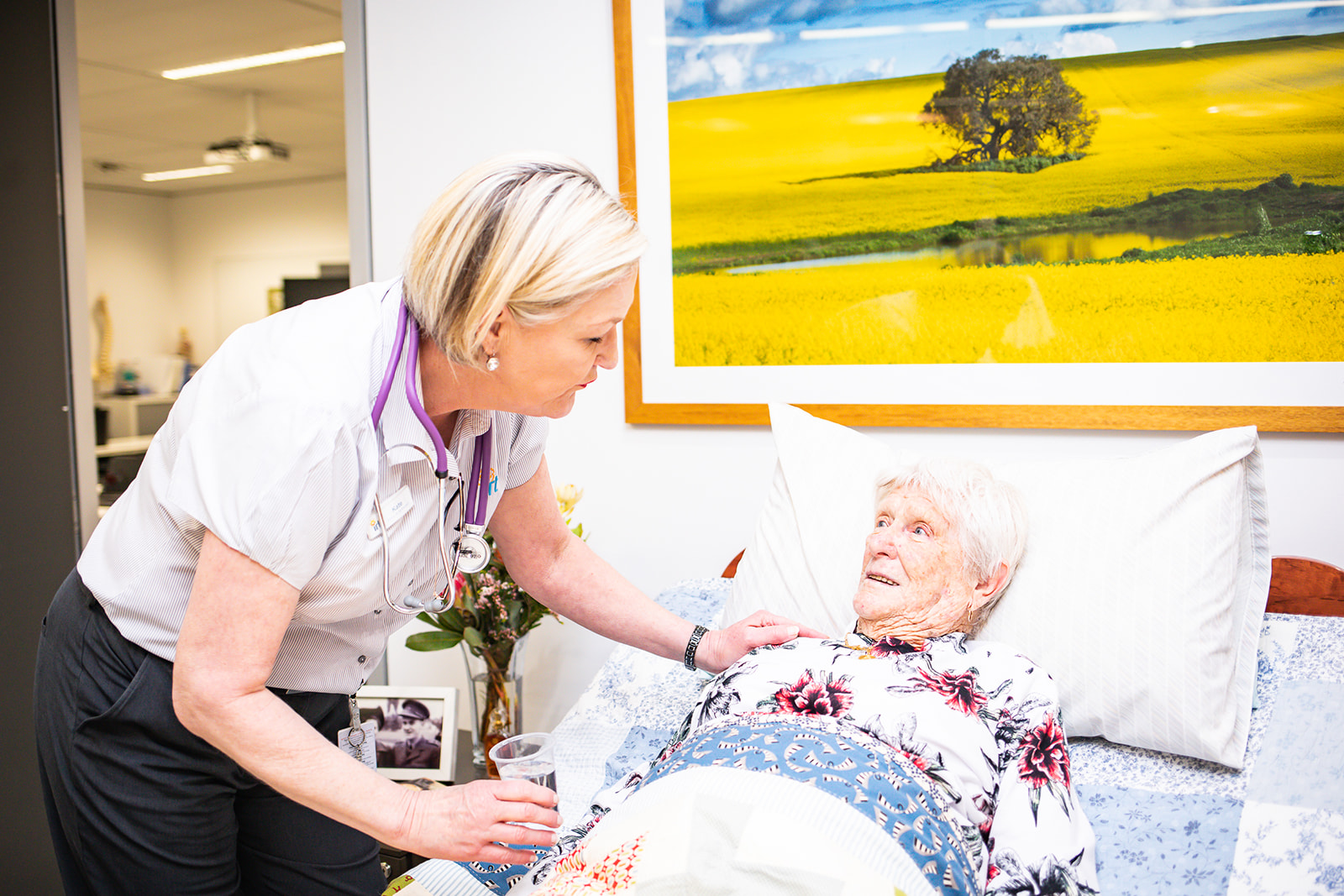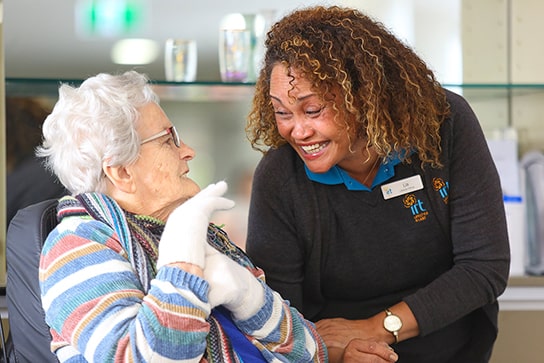Types of palliative care
Understand the difference between palliative care and end of life care and types of palliative care treatments and support available.

What does palliative care mean?
Palliative care is specialised medical care that aims to improve the quality of life for someone living with a life-limiting illness or chronic condition. It is typically assumed to mean end-of-life care, especially pain relief, for a person who is in the process of dying or rapidly approaching death. And while it is certainly used in those contexts, it's actually about much more than simply making someone’s death less painful. In fact, it is based on the needs of the patient, not their prognosis, and it is often received alongside curative treatment to boost quality of life.
What’s the difference between palliative care and end of life care?
End-of-life care falls under the umbrella of palliative care. It’s also care that aims to improve quality of life and emotional wellbeing, but it's only offered in the very last stage of a person’s life when they are quickly approaching death and need additional support. For example, as someone deteriorates from serious illness, they may lose mobility and be unable to eat or drink and require intravenous medications. End-of-life care is what most people understand when they think of palliative care, but anyone with a chronic condition can receive palliative care at any stage of life-limiting illness. It’s also possible to receive palliative care and recover, whereas end-of-life care (as the name suggests) is offered when someone is very close to death.
Learn about the myths of palliative care
Where can you receive palliative care?
There are four main places where palliative care services are provided to improve quality of life, and this is dependent upon the individual and their family’s needs and desires. Regardless of the context in which care is received, palliative care professionals can help a person and their family manage the disease or illness and the wide range of related symptoms.
Care providers
1. In hospital
This is a short-term form of palliative care that’s usually provided by a nurse, specialist or other medical professionals while a person awaits transfer to receive palliative care services elsewhere.
2. Residential aged care centre
Residents at an aged care centre may access palliative care where they live as an additional service that’s part of their care plan, and some may even reside in a palliative care unit at the centre. Not all aged care centres provide palliative care, but it is generally considered to be a much calmer environment to receive this type of treatment than in hospital. It’s a preferable option for many as it combines the 24/7 support of a hospital with the comforts of a home environment.
3. Hospice
At a hospice, the palliative care and treatment may be similar to that offered at an aged care centre, however, the person doesn’t need to be a resident; a person could simply visit for the day then return home.
4. At home
It’s also possible to receive palliative care services and treatment at home, whether it’s through home care services where a professional visits from time to time, or through having a live-in carer. Again, this is generally considered a calmer environment and may make it easier to be around loved ones more regularly, but it can be very expensive having a full-time live-in professional carer.
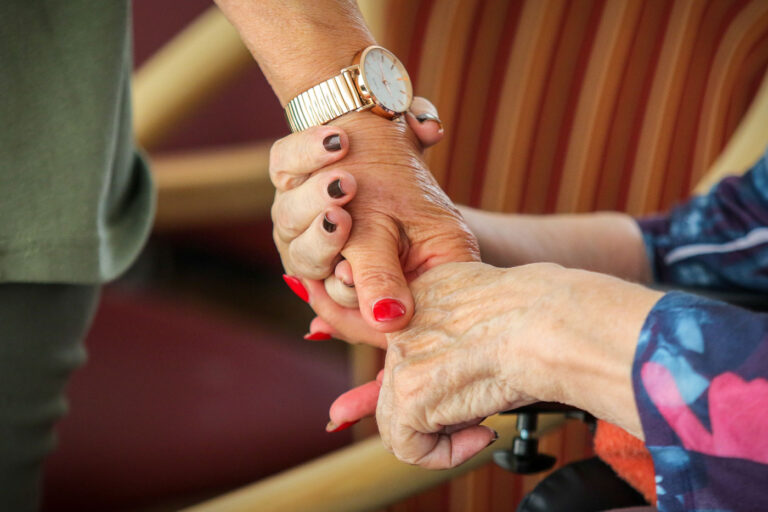
Palliative care at IRT
At IRT, many of our aged care centres offer specialised palliative care and end-of-life care in a supportive and calm environment where our palliative care team puts the individual first. Participating care centres offer 'Serenity' neighbourhoods: defined areas which offer specialised palliative care to help residents manage symptoms and access the personalised care and support they need to manage a life-limiting illness. We also have a Namaste program at participating care centres that focuses on treatments such as therapeutic touch, aromatherapy, and music therapy.
Find out moreTypes of palliative care treatments and support
Palliative care treatments vary widely and depend upon the needs of the individual and the palliative care provider, however, they typically aim to address the following areas:
1. Physical treatments
Physical side effects of life-limiting and serious illness and associated treatment can include a range of symptoms from pain and fatigue to breathing problems and nausea. Palliative care aims to help reduce the impact of these through a range of strategies.
These may include anti-nausea medications, physical therapy, repositioning or providing massage and touch therapy. The type of care really depends on the person and their needs. For example, if someone needs end-of-life care, then medication such as morphine may be administered to help with pain management if required.
2. Mental health support
Life-limiting illnesses, their treatments and processing one’s mortality can all play a role in negatively affecting mental health, but there are many ways to lessen the impact and improve quality of life. Part of the palliative care plan may include relaxing activities that are proven to reduce common mental health problems such as stress, depression or dementia. Sunshine therapy, aromatherapy, music therapy, art & craft, gentle exercise and pet therapy are all examples of strategies that may be used to offer additional support and help support relaxation.
3. Social support
One aim of palliative care is to increase social interaction, which in turn, may help improve quality of life. At an aged care centre, palliating residents may be encouraged to engage with lifestyle activities, so that they continue to interact with other residents and staff via social activities such as bingo or arts and craft. If someone is unable or unwilling to participate in group activities, a lifestyle officer may visit the resident in their room for a chat and bring an activity to them to reduce isolation. Family and loved ones are also able to visit at any time as well.
4. Emotional support
Having a life-limiting illness can be extremely challenging for all involved and lead to a range of emotions that are difficult to manage, whether it’s anger, grief or anxiety. A support group, counsellor or psychologist can help the person receiving palliative care or their loved ones get the emotional support they need to cope with the situation. Aged care centre employees offer compassionate support, however, they can also connect residents and their family members with additional counselling services, if required.
5. Spiritual support
Having a life-limiting illness can bring up a lot, including many questions about life, the meaning behind the illness and what might happen after death. Part of palliative care may include connecting a person to relevant spiritual groups of their choosing with whom they can discuss such matters and find spiritual support. For example, in an aged care centre if a resident is Catholic, then staff can arrange for a priest to visit and offer comforting words or prayer as part of the person's care.
For more information about palliative care, visit Palliative Care Australia. This is the peak national body for palliative care that promotes quality palliative health care. Their website includes resources for patients and carers, plus a palliative care service directory and other health care service information.
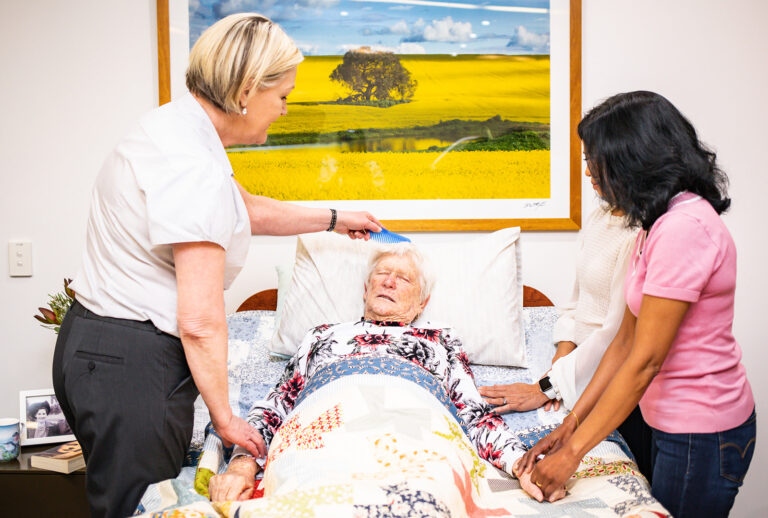
Palliative care at IRT
Palliative care programs help people live as fully and as comfortably as possible with a life-limiting illness. Residents and families are supported through this time through a number of specialist programs, where residents are honoured in life, and in passing. At IRT, our Journey of Care model aims to cater to the individual’s unique care needs by offering highly personalised care. For residents who need palliative support, we offer ‘Serenity’ neighbourhoods at participating care centres: defined areas which offer palliative care services to residents, as well as our ‘Namaste’ program. Trained staff integrate sensory stimulation into care delivery using therapeutic touch, aromatherapy, music and sensory experiences.
Founded on the power of loving touch, some of the benefits of our Namaste program include:
- A relaxed and fulfilling environment
- Reduced need for medication
- Decreased pain
- Fewer incidents of aggression
- Increased social interaction
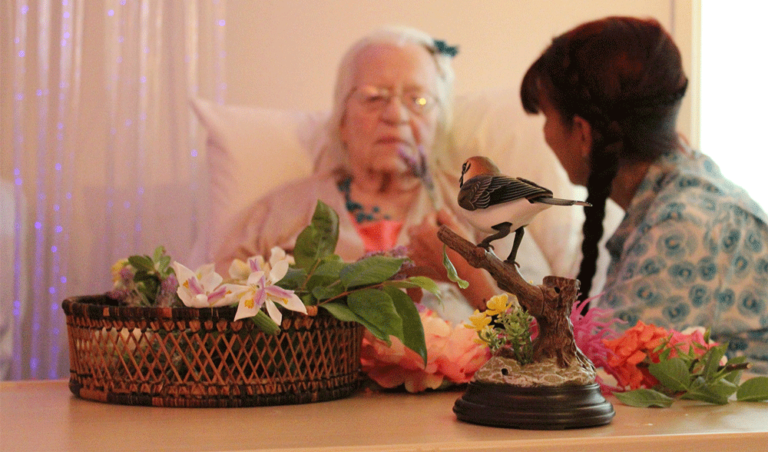
Get support at IRT
Learn more about palliative care at IRT and how we can support and comfort you and your loved one.
Find out moreSubscribe to our newsletter
You may also like
Palliative care vs end of life care: what's the difference?
What is palliative care? People think palliative care is the end of someone’s life, but there’s so much more to it.
Choosing an Aged Care Centre: What to consider
Moving from your home into a residential aged care centre can be a rewarding experience for you or your loved one.

